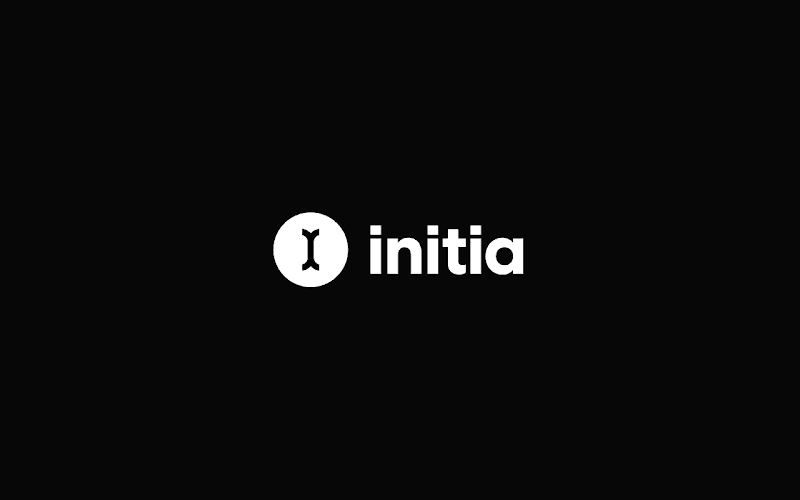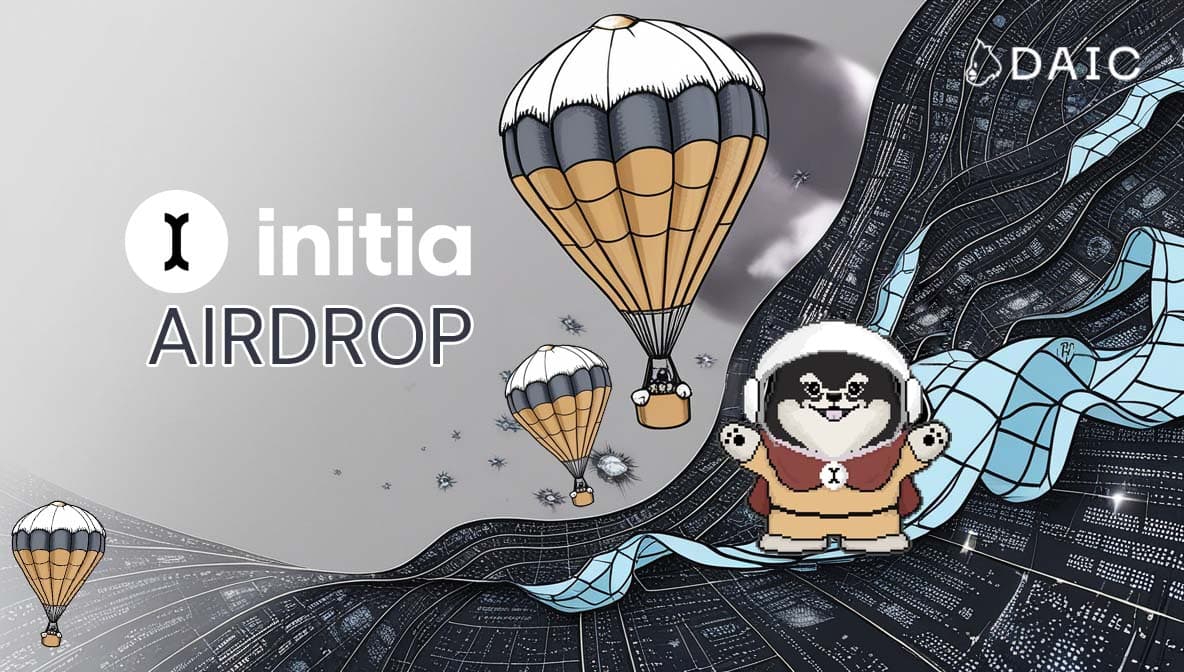Key Takeaways
- Cosmos Integration: Initia leverages Cosmos' IBC protocol to support seamless cross-chain interactions.
- Minitias: These Layer 2 rollup chains form the backbone of Initia, offering various DeFi services like liquid staking, margin trading, and prediction markets.
- Partnerships: Initia is closely integrated with Celestia and other major ecosystems, enhancing interoperability.
- EVM-Compatible: Supports Ethereum-based applications with its modular rollup architecture.
- Future Growth: Initia is rapidly expanding its ecosystem, with a roadmap focused on innovation and adoption.
Introduction to the Initia Ecosystem
Because Initia is built to be a Cosmos- and IBC-based chain employing Cosmos’ Inter-Blockchain Communication (IBC) protocol, the startup has cultivated numerous partnerships with Cosmos-related entities including the likes of the Interchain Foundation and All in Bits (AIB) (formerly Tendermint), among others.
In addition, the Initia project has also forged a strong foundational relationship with Celestia and its growing ecosystem. Recall that Celestia is a modular network that allows Layer 2 rollup chains to harness its consensus and data availability features.
This is especially noteworthy considering that Celestia is one of the strongest ecosystems in all of crypto with numerous independent protocols launching this year each valued in the billions. This means that Initia will be able to forge game-changing partnerships with a wide range of state-of-the-art protocols that are Celestia-focused.
As the Initia platform evolves, apart from its foundational partnership with Celestia and Cosmos, it will continue to expand to become an integral part of the larger modular blockchain ecosystem.
This is significant because it allows Initia to connect with and share technology between a large number of networks operating within the burgeoning modular blockchain ecosystem and beyond. Of great importance are Move programming-focused iterations Sui and Aptos and the larger Ethereum network and its many protocols and dApps.
Although in its nascent stage, the development of the Initia ecosystem continues to progress. A major part of that progress is the multifaceted utilities that many of the new Layer 2 rollup-focused platforms will provide. On Initia, these L2 rollup-enabled platforms are called Minitias.
Minitias play an extremely vital role in the ongoing development and utility of the larger Initia ecosystem because they are blockchains that provide a host of products and services within Initia’s all-encompassing network of interwoven rollups.
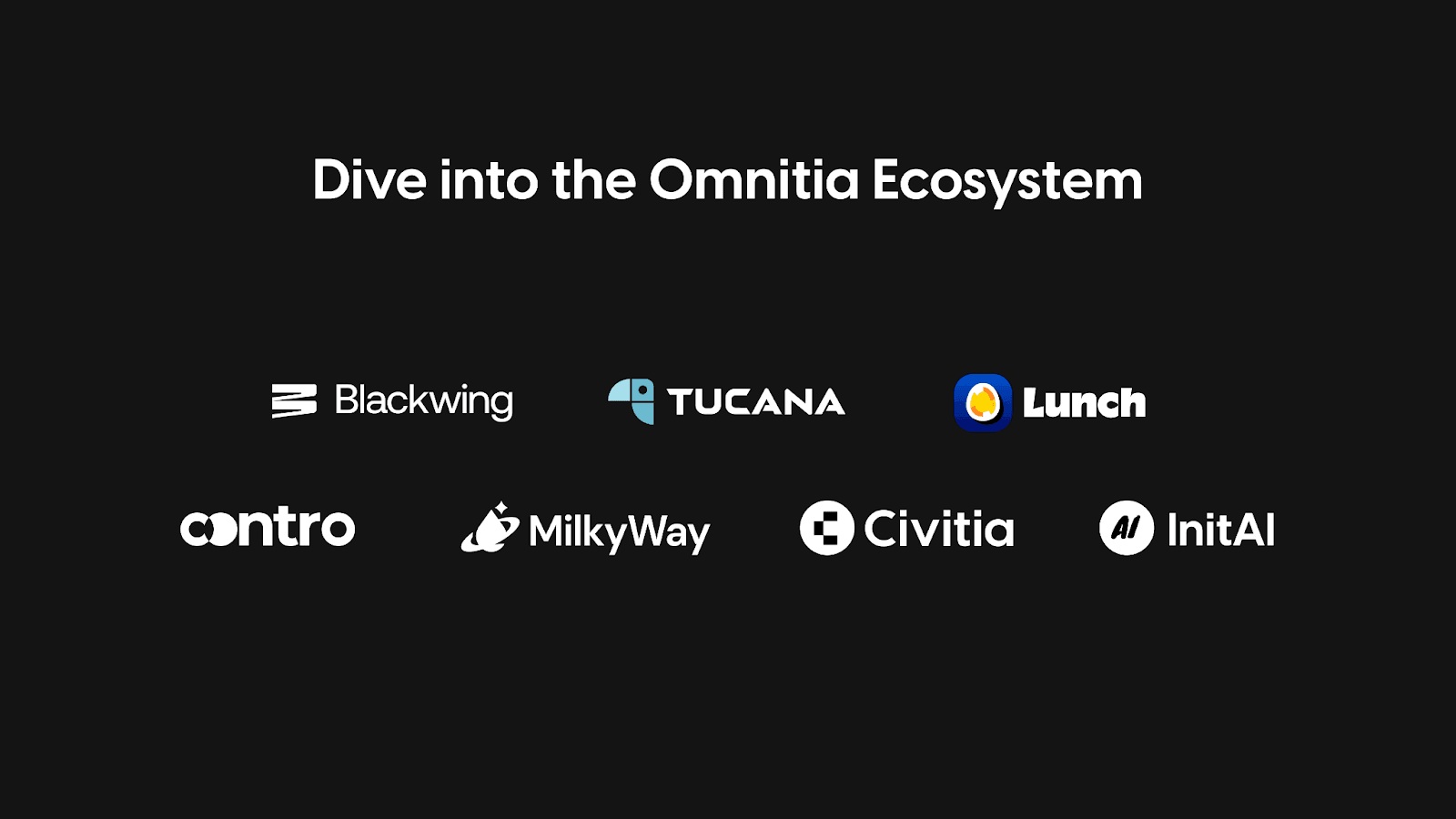
Some of the most promising Minitia rollups that make up the Initia ecosystem include:
- MilkyWay a liquid staking protocol built on Celestia that is also supported by Osmosis and the larger Cosmos ecosystem.
- Blackwing a margin trading platform that leverages intent-solver architecture to dramatically improve trading execution, user experience, and flexibility, while simultaneously offering a unique liquidity pool type that allows traders to place margin trades without the possibility of liquidation.
- Contro Protocol a derivatives, spot exchange, and prediction market that employs a specialized auction-focused orderbook model to create a decentralized, equitable, and user-focused exchange.
- Civitia a gaming platform that allows users to take part in a rewards-focused post-apocalyptic global domination arena where users compete with one another to acquire cities and various geographical areas as a means to reconstruct society.
- Tucana - a modular rollup and DeFi platform that allows users to exchange assets while taking part in yield farming, liquidity aggregation, and derivatives trading.
- Lunch app - a rewards-based wallet and interactive connectivity platform that allows users to trade INIT to and from various assets, while enabling the creation of user-built NFTs.
If you’d like to learn more about the founding and history of the Initia platform, along with what makes it truly special, consider having a look at our initial article in this 3-part series.
Fundamentally, the Initia ecosystem is meant to be interwoven, meaning its sovereign rollup chains (Minitias), its virtual machine environments, the platform’s liquidity, and the larger Initia community are meant to operate as a more powerful interconnected unit.
Let’s explain each of the above Minitias in greater detail below:
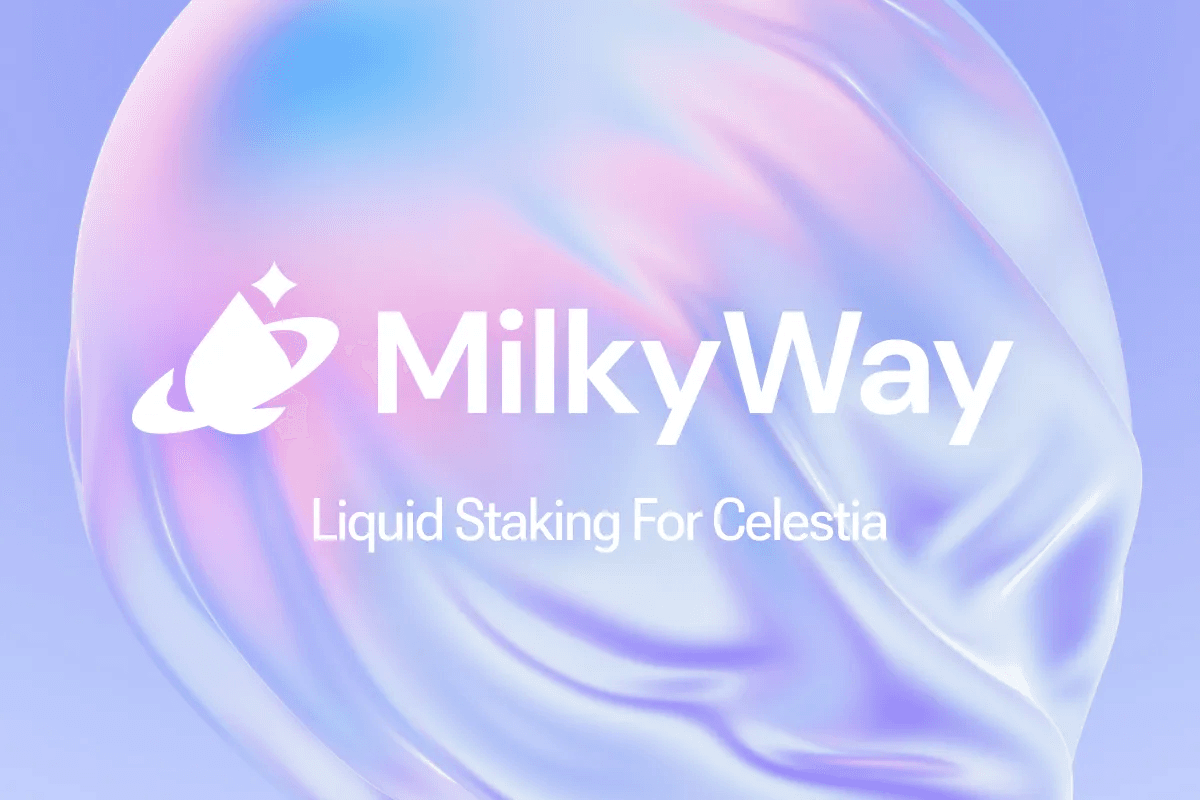
Milky Way
MilkWay is the premier liquid stalking protocol built on the Celestia blockchain.
For those unfamiliar, liquid staking is a recently developed staking framework that allows users to accrue value on their staked assets by locking them within a protocol in exchange for liquid staked receipt tokens that can then be used within various DeFi primitives such as lending, borrowing, and trading.
In the event a user chooses to unstake their assets, the original assets they initially deposited are returned to them, plus the additional tokens they accrued during their liquid-staked DeFi interactions.
One of the main differentiating factors between liquid staking and conventional staking models is that there is no predetermined waiting period (known as the unbonding period) required to unlock initially deposited assets.
Now that we have a better understanding of liquid staking, let's explain how MilkyWay works. In order to accrue awards in the manner detailed above, users leveraging MilkyWay are required to lock their TIA tokens (TIA is Celestia’s native asset) within the MilkyWay protocol.
After the initial bonding (locking in) of TIA, users are given a liquid staked receipt token called milkTIA in exchange for the duration they accrue value on their locked TIA. As is with all liquid staking protocols, this rate of value accrual is set using a predetermined Annualized Percentage Yield (APY). As of December 31st, 2024, the APY for staked TIA on MilkWay is 9.7%.
Initially MilkyWay has been deployed to operate on Osmosis (Cosmos’ DeFi hub and most widely used DEX). However, in time, the protocol will migrate to Celestia’s rollkit framework and operate independently on Celestia while natively issuing milkTIA.
Find out more about MilkyWay in our blog post: MilkyWay (MILK): Modular Liquid Staking and Restaking on Celestia.
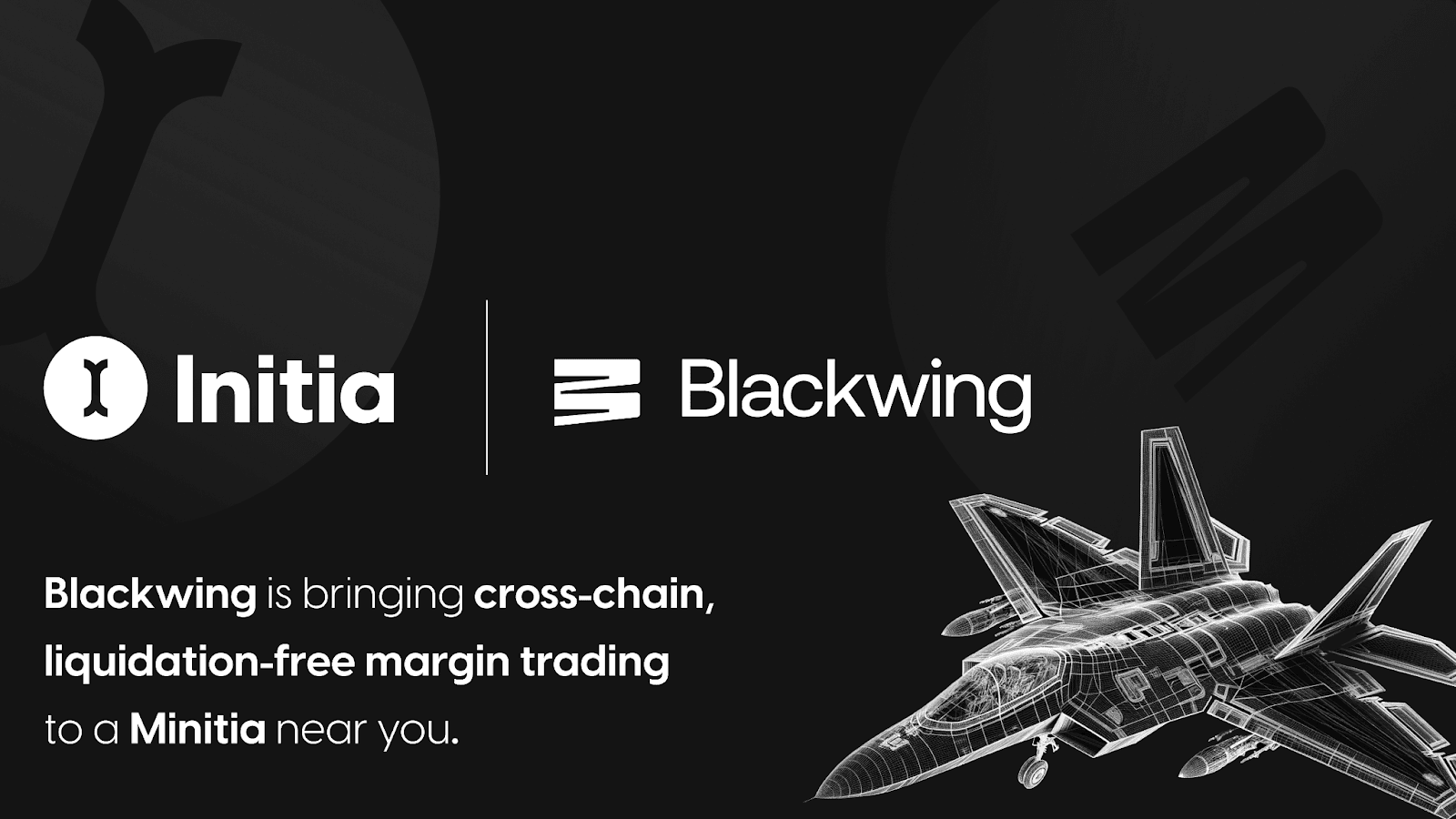
Blackwing
Blackwing Finance is a modular blockchain for margin trading. As one of the first Minitias to launch on Initia, Blackwing’s focus is on improving how margin trading platforms operate.
As a foundational aspect of the Blackwing platform, the protocol makes use of specialized intent-solver architecture to achieve order fulfillment by abstracting away the execution details from the potential desired result, exponentially improving UX and trading flexibility in the process.
For example, when a trader opens a leveraged position they're adverse to dealing with complexities such as bridging assets to the correct chain, finding the best exchange with the best prices, and worrying about how MEV may impact their trade.
Instead, with Blackwing’s intent-solver architecture, a user simply submits their intent to the Blackwing network and the network automatically determines the best way to execute the proposed trade as fast and as accurately as possible.
For those unfamiliar, intents represent a new way of building blockchain systems and are representations of an action a user wants to take prior to it actually being executed. On Blackwing, intents coincide with position modifications and are representative on-chain as Abstract Transaction Objects (ATOs).
ATOs are essentially a specialized framework that allows intents to work in conjunction with solver networks (by considering user target chain addresses, target chain contract addresses etc.) to create the most accurate result possible for trade execution.
To work as intended, ATOs on Blackwing make use of a solver (and later an entire solver network) called Whirlwind via a just-in-time liquidity model supported by Axelar and Circle’s CCTP to manage deployed liquidity across a plethora of supported chains.
In addition to its intent-enabled architecture, the Blackwing margin platform makes use of an innovation called Limitless Pools that allows users to carry out leveraged trading without the possibility of liquidation (a process whereby users lose their entire initial position in a trade).
Essentially, Limitless Pools rely on the fact that existing CLMM and AMM positions exhibit similar payouts to cash-secured put or covered call option strategies. In a manner similar to how multiple options contracts can be conjoined to form different trading strategies, Blackwing converts liquidity provider (LP) positions into constructs called Domains to guarantee that the original LP positions can be recreated irrespective of the original asset’s price, effectively eliminating the possibility of liquidation.
In addition, Blackwing also employs a regular framework (called Classic Mode) akin to typical margin trading protocols, whereby if a leveraged trade goes against the desired outcome, the entire position and its initially deposited collateral are liquidated.
To better understand the technical architecture that supports Minitias (independent Layer 2 rollup appchains) such as Blackwing and others, it's recommended that you have a look at our second article in this series that details Initia’s architecture in greater detail.

Contro Protocol
Contro Protocol is a Layer 2 Mintia rollup built on the Initia network. More specifically, Contro is a DEX offering both spot and derivatives trading that recently pioneered its newly developed Gradual Limit Order Book (GLOB) exchange framework.
While using decentralized exchanges, traders are often susceptible to poor liquidity, front-running, inequitable spreads, impermanent loss, stop hunting, liquidation, and high service charges and fees. In essence, market participation often incurs an invisible tax, especially in DeFi.
The Contro platform is designed to unlock decentralized, permissionless, low-fee markets for all by providing a trading environment that solves the above-mentioned issues.
To realize this goal, Contro prioritizes fairness and peer-to-peer (P2P) integrity to provide a robust, fast, high-frequency trading platform designed to eliminate the possibility of insider trading and manipulation.
When insiders are able to buy undervalued assets from sellers they turn a profit. The main problem with this approach is that this profit comes from the sellers providing liquidity at an inequitable price, meaning they may have been too slow to take advantage of recently released news or additional events that resulted in unforeseen price movements.
To eliminate this discrepancy, the GLOB harnesses auction-based trades. Therefore, when insiders place orders, the auction price adjusts prior to the trade being executed, then the newly defined price is streamed for all potential buyers, not just those with the inside track, instantly improving the purchase price of assets for all parties.
This creates a system where P2P markets present accurate valuations, not just quick reactions. The end result is a win-win, insiders and market makers can’t exploit the exchange and non-insider traders have accessibility to more equitable pricing.
In fact, the GLOB paradigm allows orders to become entrenched in a continuous stream of trades similar to a time-weighted average price (TWAP) asset pricing model where all orders remain in the orderbook over a specific time frame, resulting in full uniformity across the system’s state.
The platform also offers a peer-to-peer auction-enabled prediction market. Often in P2P prediction market models, sellers are simply buyers on one side that unknowingly agree to unfavorable odds.
To help eliminate these issues, Contro’s auction-based model allows participants to be protected from significant losses through the market aggregation of asymmetrically distributed information, while simultaneously ensuring fees are low.
In addition to its main ethos for fair and equitable trading, unlike most DEXs, the Gradual Limit Order Book framework bootstraps fair and scalable markets for any coin, outcome, bet, or potential possibility by allowing users to trade straightforward predictions, leverage a host of structured products, or initiate a more simplistic market buy.
Civitia
Civitia is a game that allows users to compete with one another to establish global domination by acquiring real-world cities and earning yield in Initia’s INIT asset. In Civitia, players begin the game after planet Earth has suffered a catastrophic nuclear attack and civilization has been destroyed. They are then given the tall task of rebuilding the planet.
To rebuild the planet, players must collaborate in a community environment while striving to accomplish the best possible outcome for themselves. The game leverages capitalism (free market and supply/demand pricing) and socialism (wealth tax and rent regulation) to mimic the current real-world environment.
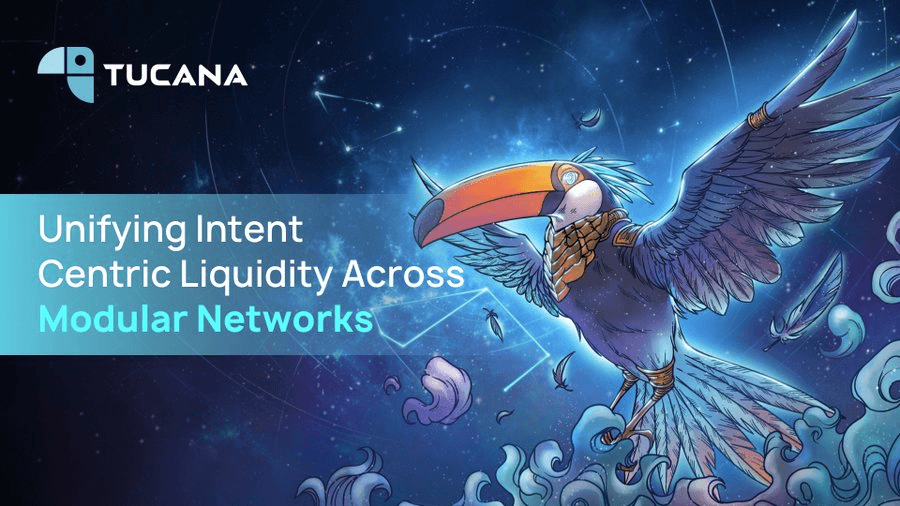
Tucana
Tucana is an interwoven modular rollup focused on DeFi that makes use of the innovative Proof-of-Tradable-Value (PoTV) consensus mechanism while being IBC native and utilizing the MoveVM and intent-centric architecture. The platform’s main focus is to offer a powerful trading market that allows for yield opportunities and derivatives trading.
Furthermore, Tucana is also a liquidity aggregator DEX that allows users to swap assets between any IBC-enabled automated market maker (AMM), therefore providing traders with a better overall user experience, increased efficiency, and the ability to execute trades with limited slippage.
Additionally, Tucana also developed a mechanism that allows users to swap between assets while simultaneously auto-bridging their assets to their preferred destination chain in a single transaction.
Lunch App
Lunch app is a Minitia that combines its rollup-enabled backbone with a mobile application to create a system that bridges on-chain activities between different networks supported by Initia (think EVM, Cosmos, Celestia, and Move-based networks).
Lunch itself is a wallet built to be fun and interactive by allowing users to participate in quests that allow them to earn in-app eggs in exchange for rewards from the likes of Starkbucks, Nike, and others. It also allows users to work on the development of their own Jennie NFT through the Initia testnet.
As well as supporting Initia’s INIT token and the Initia version of USDC, Lunch app supports various large-scale crypto tokens such as BNB Smart Chain’s BNB, Avalanche’s AVAX, Ethereum’s ETH, Polygon’s MATIC, and many others. Furthermore, the application allows for the swapping of INIT between USDC and other asset types.
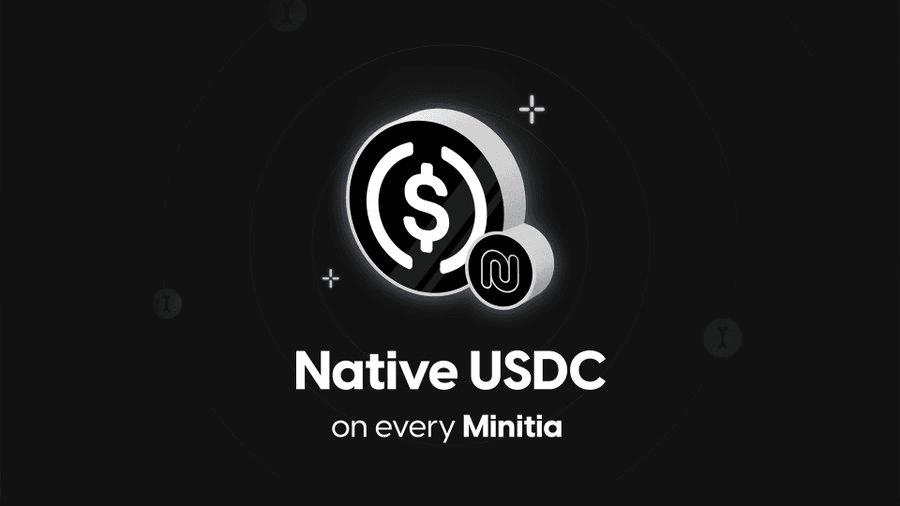
Noble
While not a Minitia itself, Noble is a critically important piece of infrastructure for Initia and the larger Cosmos ecosystem.
Through Circle’s Cross-Chain Transfer Protocol (CCTP), Noble acts as an asset issuance middleware layer that provides interoperable USDC stablecoin connectivity between different Minitias within the Initia platform.
In addition, CCTP connects Initia and its Minitia rollups to sovereign chains within the larger Cosmos and Celestia ecosystems. Moreover, the Noble-Initia partnership makes use of Kado for fiat onboarding by allowing users to buy crypto with Apple Pay or their credit or debit card.
Initia Roadmap
- 2020 - Future Initia founders Zon and Stan begin their Web3 careers as developers at Terraform Labs
- Early 2022 - Zon and Stan initiate the development of a DeFi chain on Cosmos but shortly thereafter return funds to investors after the severity of the bear market worsens
- Early 2023 - As market sentiment improves, Initia is founded by Zon and Stan and other early developers
- October 2023 - Initia receives an undisclosed investment from Binance Labs to support the development of its infrastructure and ecosystem
- February 2024 - Initia finalizes a seed funding round of 7.5 million supported by Delphi Ventures, Hack VC, Figment Capital, Nascent, A. Capital, Big Brain Holdings, and several angel investors
- Q4 2023/Q1 2024 - Initia completes its closed testnet launch
- May 2024 - Initia initiates its incentivized testnet launch
- April 2025 - Initia launches it’s mainnet
Comparative Analysis
As a cutting-edge platform for interwoven rollups that solves many of the issues L2 rollup platforms are susceptible to, Initia has the potential to become a game-changing platform in the rollup arena.
Initia solves a number of problems that many rollup platforms and blockchains in general are susceptible to. These include the lack of developer and on-chain interoperability, poor connectivity, limited decentralization, and inadequate performance. In addition, Initia’s design places great emphasis on both developer experience (DX) and user experience (UX).
To help increase usability and interoperability of the Initia platform, all minitias (independent Initia L2s) operating on the platform employ a UX that is interconnected and designed in similar manner to that users familiar with one minitia do not run into extreme complexities while using another.
Recall that Initia is built to be truly modular, meaning it's built to be fully customizable out-of-box. This allows new developers to adapt their newly developed chains for a host of specific utilities.
Initia’s continued development over the last several years allows the Initia ecosystem to be extremely well positioned moving forward despite the fact the platform is so new. To expand on this more, below we’ll compare Initia with OP Stack, Dymension, and the Cosmos ecosystem in general.
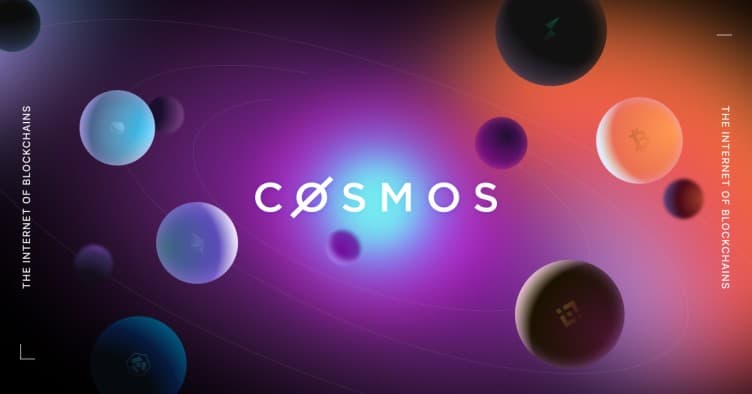
Cosmos Ecosystem
Initially founded in 2014, the Cosmos network has remarkably expanded since its early days, especially since the launch of the Inter-Blockchain Communication (IBC) protocol in 2021.
For many years, the Cosmos ecosystem has provided a platform for the development of blockchains focused on interoperability and cross-chain connectivity. On Cosmos these are represented as application-specific blockchains called appchains (or zones in Cosmos-speak).
To realize its overall use-specific flexibility and the grand vision for Cosmos, the Cosmos ecosystem leverages several independent components that are critically important to its far-reaching utility, interoperability, and continued adoption. These include:
- CometBFT Consensus: CometBFT (formerly Tendermint Core) is a language-agnostic consensus algorithm designed by some of Cosmos’ earliest pioneers. More simply, CometBFT is the proprietary technology that all blockchains (including the Cosmos Hub) running on Cosmos make use of. It employs state machine replication technology to create new blockchains that run within the greater Cosmos network.
- Inter-Blockchain Communication Protocol: The Inter-Blockchain Communication Protocol, or IBC, is an interoperable Layer 0 communication layer that is used to facilitate data and asset sharing between different Cosmos chains and external blockchains such as Ethereum, Solana, and many others.
- Cosmos SDK: The Cosmos SDK is an open-source, scalable, infrastructure designed for building multi-asset Proof-of-Stake (PoS) and Proof-of-Authority (PoA) blockchains within the greater Cosmos network. Essentially, the Cosmos SDK is a framework that allows developers to built Cosmos blockchains with numerous predefined and customizable specifications (i.e., CometBFT consensus, asset storage and transfer mechanisms, governance, staking and slashing frameworks, network interoperability etc.) to dramatically decrease time to market and production.
Although Cosmos is one of the strongest architectures in existence for creating use-case-specific blockchains, it represents a slightly different framework when compared to Initia.
Several of the main differences are the fact that Initia itself is a platform focused on Layer 2 optimistic rollups, while Cosmos is an infrastructure tailored for the development of Cosmos L1 appchains. Rollups do operate on the Cosmos network but the network is primarily designed as a platform for the replication and deployment of L1s.
While Initia is a L2 rollup platform, in many ways, the Initia’s L2 is representative of a complete Cosmos SDK chain (like all Cosmos chains, Initia uses CometBFT and the Cosmos SDK) that also harnesses a wide range of specific modules to replace consensus with the OPinit Stack. This design allows Initia rollups to possess the same adaptability similar to completely independent Cosmos SDK chains.
Initia is built to be an interoperable, scalable, and secure interwoven rollup (which are also called appchains or Minitia L2s) deployment and customization framework capable of launching blockchains designed for different uses with different economic structures, consensus mechanisms, validator sets, language types, application logic, tooling systems, and more.
Many feel the Cosmos SDK is one of the most powerful and flexible stacks used to construct unique blockchains as is evidenced by the continued success of the likes of Celestia, Axelar, Injective, Noble, dYdX, Osmosis, and others.
Now with Initia’s rollup stack, blockchain development teams are able to launch projects similar to those above in a much simpler manner, given it is no longer necessary to deploy independent validator sets for each individualized chain.
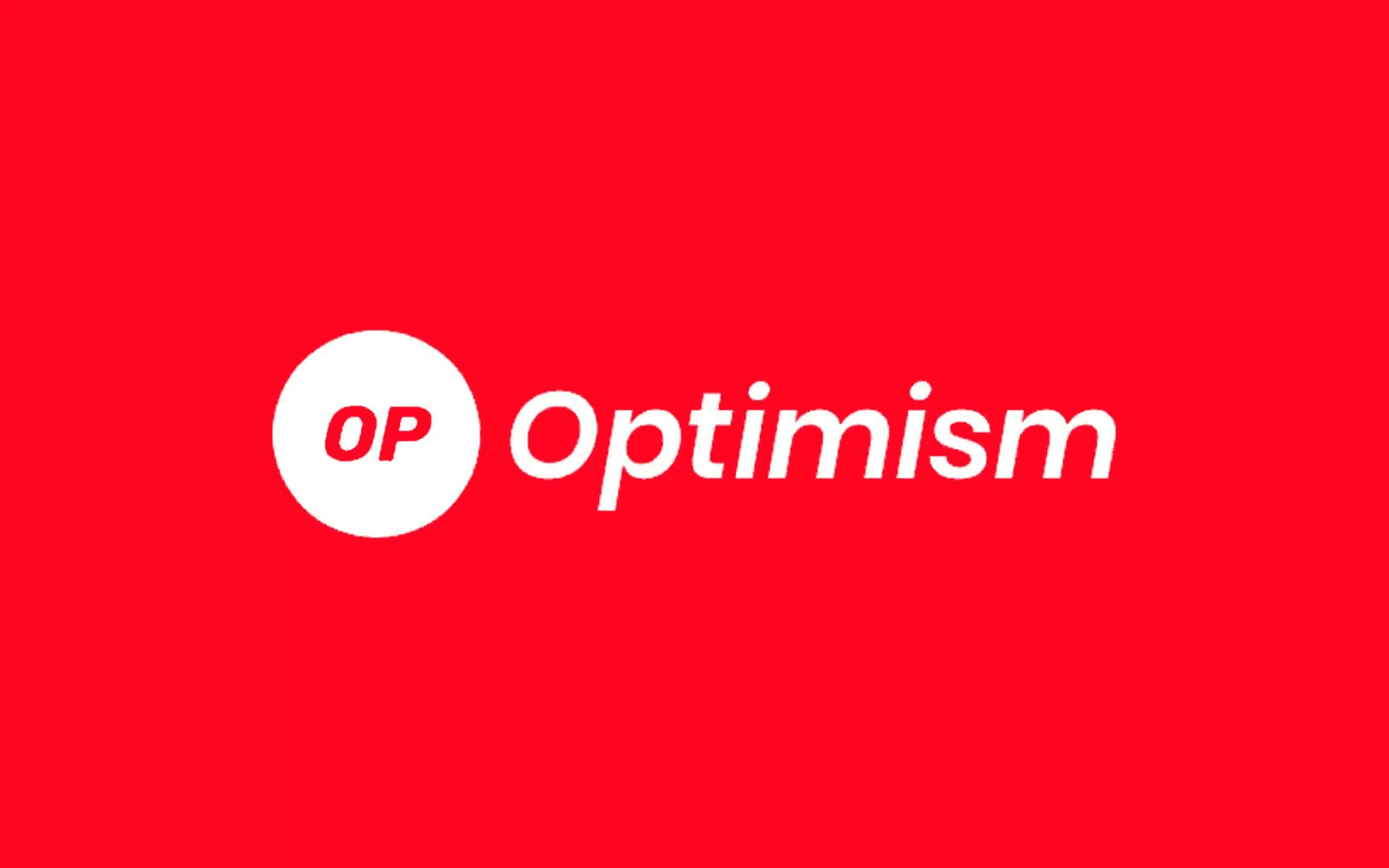
OP Stack
Since its mainnet release in 2021, Optimism’s OP Stack has become one of the industry’s premier solutions for the deployment of optimistic rollup (OR) Ethereum L2’s
Increasingly throughout the last two years, OP Stack’s underlying Rollups-as-a-Service (RaaS) technology has been used by numerous industry giants to develop their own Ethereum L2 platforms.
These include Coinbase (underpinning its Base L2) and Binance (as the foundation for the opBNB L2) and numerous others. As it relates to Base specifically, according to on-chain data platform DeFiLlama, most of its metrics completely outperform even the Optimism mainnet in terms of overall usage.
OP Stack’s modular architecture (i.e., through interchangeable modules) allows developers to deploy their own Optimistic Layer 2 chains that are end-user-need-specific, meaning they can be completely tailored to a desired business model or market segment by their developers.
In general, optimistic rollups offer near-zero computational overhead, low transaction fees, fast throughput, enhanced proof modularity, and improved EVM compatibility and node performance. This intersection of these characteristics prioritizes key business operations and user interaction to enable optimal performance for a variety of use cases through adaptable L2 blockchains.
Regardless of its lofty status and ability to deploy ORs and Ethereum appchains, the OP Stack architecture is arguably representative of some of the challenges that rollups experience when deployed on Cosmos. Fortunately, Initia was developed to eliminate many of these issues.
More specifically, Initia enables fungibility between Cosmos optimistic rollups without relying on third-party service provider support. In general, new Optimism-focused optimistic rollups are dependent on instant bridge providers, third-party oracles, and only exhibit EVM compatibility.
Thanks to its modular design, Initia enables the creation of fully customizable appchains (optimistic rollups) that are capable of retrofitting different types of components for their intended utilities and market focus. This design allows Initia applications to become extremely powerful and simple to build, rather than being primarily smart contract layer-focused.
This design also greatly increases performance for the chains building atop its network, dramatically increasing optimistic rollup appchain scalability via an independent transaction execution framework. This allows Initia to be as lightweight as possible, while dramatically simplifying developer and user experience simultaneously.
Although Optimism is extremely advanced in its own right, especially with the eventual release of its Superchain platform, Initia represents a solution that exhibits its own critically important features, especially because of its independence from third-party service providers layers, use-specific adaptability, developer ease-of-use, and its interoperability within the Cosmos, Celestia, Ethereum, and Move-based ecosystems.
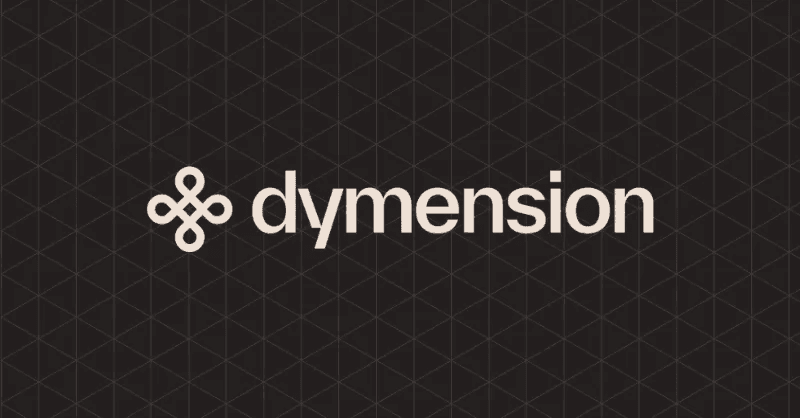
Dymension
Dymension is a modular L2 rollup platform built similarly to Initia as a foundational layer for the operation of a larger interconnected ecosystem of Layer 2 blockchains (called RollApps).
Like Initia, the Dymension network is a Cosmos SDK-based platform created to help streamline the development and deployment of autonomous blockchains by eliminating many of the issues newly developed chains face.
To help realize these goals and others, the Dymension platform makes use of several mutually beneficial elements. These include:
- Dymension Hub (back-end L1): Dymension Hub is a Delegated-Proof-of-Stake (DPoS) Layer 1 blockchain that acts as the back-end and control center for the larger Dymension network. Like Initia’s L1, the Dymension Hub is a base layer responsible for providing coordination of the network’s interconnected network of RollApps. The platform is mainly responsible for providing security, bridging services, cross-chain liquidity sharing, and more between RollApps operating on the network.
- RollApps (front-end L2s): RollApps are sovereign L2 rollup blockchains deployed through the Dymension Hub. RollApps are custom-tailored and modular in design, meaning they possess the capability to be pre-configured with numerous modules that are use-case specific and tailored for a wide range of utilities. Like any independent blockchain, RollApps possess the ability to be fully customizable as they relate to governance, economic structure, bridging, and interoperability between other L2s within the network.
- Data Availability (data storage): The Dymension Hub, RollApps, and the entire ecosystem make use of a data availability (DA) layer to operate. This design allows Dymension chains to be more efficient because they don’t require their own independent protocols to maintain data stores for transactions and other processes on the network long term. Instead, Dymension makes use of Celestia as a data availability service.
Similarly to the Initia network, the Dymension Hub L1 acts as a decentralized router, providing its larger validator set and consensus framework for all RollApps deployed on the platform by allowing each independent chain to piggyback a host of all-important services from the mainchain. This approach helps eliminate the need for sovereign chains to bootstrap their own validator sets, economic systems, and everything they need to launch their own respective networks.
The Dymension platform also makes use of the Cosmos-enabled Inter-Blockchain Communication Protocol to achieve cross-cain interoperability within the larger Cosmos network and its network of blockchains (and all RollApps operating on Dymension). This design allows for the simultaneous and autonomous connectivity of a large number of chains, allowing them to share data and assets with one another in a simple, unrestrictive, and lightweight manner.
While Dymension supports EVM and WasmVM environments similarly to Initia, the platform does not support MoveVM out-of-box (like Initia).
This approach is different, but altogether, neither model is extremely advantageous compared to the other. Dymension’s virtual machine agnostic support is realized mainly through the Dymension-built RollApp Virtual Machine (RVM).
Compliance and Regulatory Considerations
Although Initia does have some staff members based in the United States, Initia Labs is officially headquartered in Singapore.
This is a good sign because Singapore is pro crypto and truly values game-changing innovation and supports an education system largely based on tech and related industries. For this and other reasons, it seems very unlikely that the US’s Securities and Exchange Commission (SEC) would go out of their way to go after Initia.
Moreover, because of the fact Initia is a newly launched project and quite small compared to most crypto enterprises that have faced regulatory challenges in the past (think Ripple, Coinbase, Binance, Uniswap etc.), a scenario where Initia faces US regulatory issues seems unlikely.
One potential consideration as it relates to rollup-specific chains in general, is that no large L2 scaling platforms have been attacked by regulators so far. Even in the event that negative precedents are set by the SEC and other global regulatory bodies related specifically to L2s, there is almost no possibility that they would go after a newly launched platform like Initia with very little liquidity and a smaller user base.
In a worst-case scenario, there is a much greater chance that a regulatory lawsuit would be levied against a platform like Arbitirum, Optimism, Starknet, Polygon, Mantle, zkSync, and the like. By taking into consideration all of the points we touched on above, it seems unlikely that Initia will face any regulatory issues moving forward.
That said, it should also be highlighted that regulatory and government entities the world over face relenting pressure from the banking sector to continue their hard stance against crypto-specific entities because they represent a significant threat to their business models.
Regardless, crypto is here to stay, so it may be in the best interest for large banks and similar entities to pressure politicians and regulators into allowing them to offer Bitcoin, Ethereum, and other tokenized assets to their customers instead of blacklisting crypto products altogether.
Initia’s Future in a Competitive Rollup Landscape
Initia represents a promising iteration on blockchain by building a host of solutions aimed at addressing several blockchain and crypto-related pain points.
Though the Initia platform separates itself from its competitors in numerous ways, perhaps its most important feature is interoperability, both in terms of developer flexibility and use-case specific appchain (Minitia rollup) deployment.
Initia’s proprietary structure allows dApps to be built in a seamless, fully customizable, and transparent manner compared to many of its industry counterparts. Initia literally allows developers of all types to create independent optimistic rollup-enabled appchains (Minitias) for nearly any use-case imaginable.
By offering compatibility with so many developer frameworks (e.g. WASM, Move, EVM and Solidity, Cosmos IBC, Celestia, and others), Initia is a simple, fast, and highly effective paradigm for multifaceted application, protocol, and smart contract development.
More specifically, Initia represents an ingenious solution to the inefficiencies of Layer 2 rollup deployment platforms such as OP Stack, Arbitrium Orbit, and others. It also helps solve some of the issues that existing Cosmos and Celestia-specific Layer 2 rollup platforms face, including the likes of Dymension and AltLayer.
Although the above projects possess many of their own advantages, Initia’s offering of extensible modularity, extreme scalability, robust security, and seamless interoperability for development and chain deployment, is extremely advanced in its own right.
In addition to its rollup appchain-focused design, many also feel that Initia boasts strong potential as a larger settlement layer and bridging framework. Because of these reasons and others, it seems likely that Initia will continue to push the boundaries of blockchain and its far-reaching utilities moving forward.
Resources
The information provided by DAIC, including but not limited to research, analysis, data, or other content, is offered solely for informational purposes and does not constitute investment advice, financial advice, trading advice, or any other type of advice. DAIC does not recommend the purchase, sale, or holding of any cryptocurrency or other investment.
